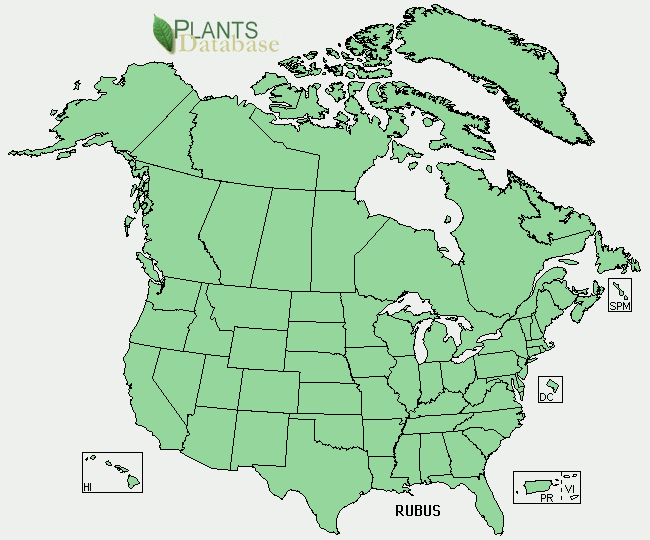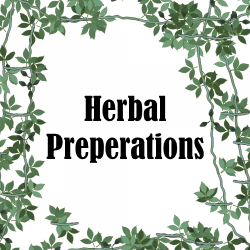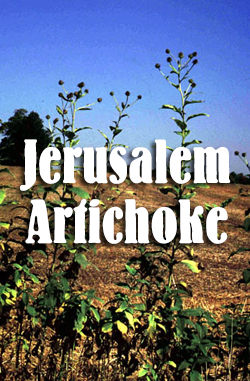Blackberry
(Rubus)
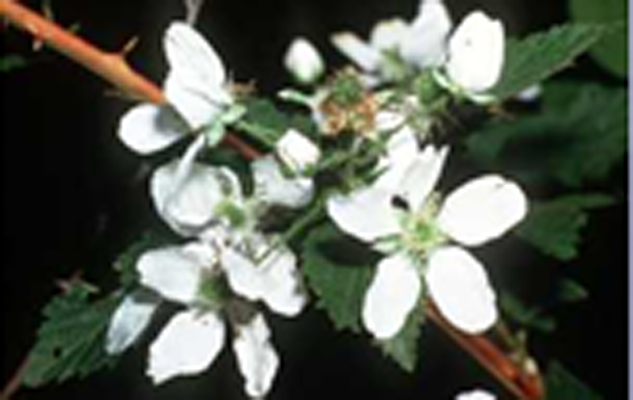
Robert H. Mohlenbrock @ USDA-NRCS PLANTS Database / USDA SCS. 1991.
Southern wetland flora: Field office guide to plant species.
South National Technical Center, Fort Worth.
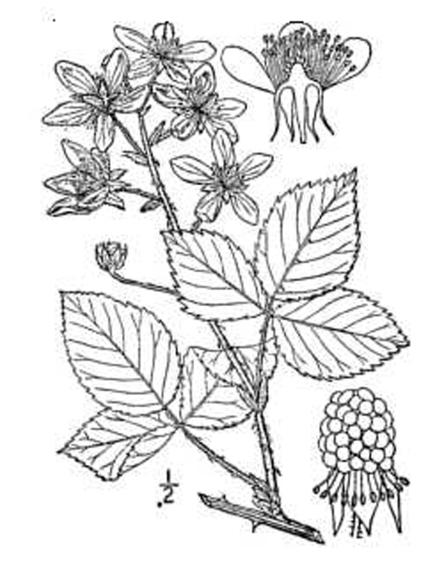
USDA-NRCS PLANTS Database / Britton, N.L., and A. Brown. 1913.
An Illustrated Flora of the Northern United States, Canada and the British Possessions. 3 vols. Charles Scribner's Sons, New York. Vol. 2: 280.
Blackberry (Rubus)
A member of the genus Rubus which consist of several species in the Rosaceae family. Blackberries are widespread, growing wild in the temperate northern hemisphere zones south into South America. It can be found in dry thickets, clearings and woodland margins, fence rows, open meadows, roadsides in cut overs and burn overs. It produces an edible fruit which is not a true berry; botanically it is termed an aggregate fruit, composed of small drupelets. It is thorny shrub or vine, typically having biennial canes and perennial roots. They produce a number of new stems from the perennial rootstock each year. The flowers are white, with five petals, and bloom in April and May. Blackberries and raspberries are also called caneberries or brambles.
Beginning in the first year, a new stem, grows to a length of 10 to 20 feet, spreading along the ground and producing light green leaves, serrate and palmate with 3 to five leaflets or fingers, the main vein on the back of each leaflet has thorns. At this stage in its growth it does not produce any flowers. In the second year, the cane becomes a floricane. At this stage the stem does not grow any longer. At this time lateral buds develop into flowering laterals. These have smaller leaves with three or five leaflets. First and second year shoots usually are covered with small hooked thorn.
The blackberry tends to be red during its unripe ("green") phase, leading to an old expression that "blackberries are red when they're green."
Food:
• Can be eaten raw• Young edible shoots are harvested in the spring, peeled and used in salads.
• Made into jelly or jam
• Used as pie filling
• Processed into wine
• Processed into vinegar
Medical:
• Plurisy and Lung Infammation• Northwestern Native Americans use powdered bark of blackberry for toothache relief
• Northwestern Native Americans use tea made of blackberry leaves to aid in digestion and stop vomiting
• Anti-thrombosis (inhibition of blood clotting)
• Concoction of root used to treat dysentery
• A decoction of the leaves is useful as a gargle in treating thrush and also makes a good general mouthwash.
• Several types of cancer
• Cordial used as a stimulant
• Cough syrup made by mixing the fruit and dried root bark with honey
• Endotoxin shock
• Cardiovascular diseases
• Age related congnitive decline
Blackberry Tea
• Dried leaves or powered root steeped in hot water for five minutes.
Used to treat colds, flu and upset stomach
Blackberry Cordial
• 1 quart of blackberry juice• ½ to 1 ounce of nutmeg, if desired
• ½ to 1 ounce of cloves, if desired
• 2/3 cup of honey
Heat until you have syrup
Used to treat Colds and fluBlackberry Shoot Tea
• Boil shoots in fresh water
Treats mouth irritations and canker sores
